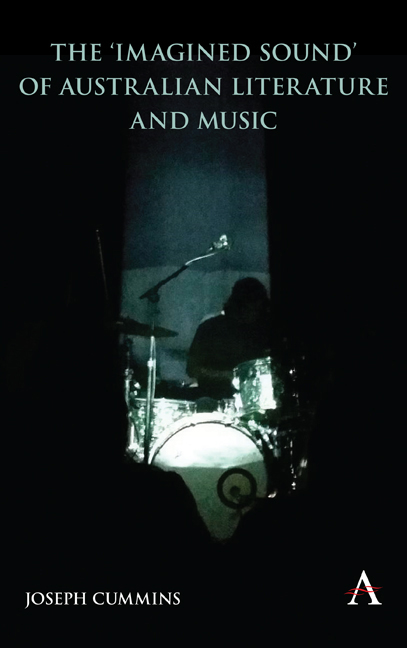Book contents
- Frontmatter
- Contents
- Foreword
- Acknowledgements
- Introduction: Imagined Sound
- Part One Listening to the Continent
- Part Two Listening to Islands and Archipelagos
- 4 An Archipelago of Convicts and Outsiders: The Songs of the Drones and Gareth Liddiard
- 5 Echoes between Van Diemen's Land and Tasmania: The Space of the Island in Richard Flanagan's Death of a River Guide and Carmel Bird's Cape Grimm
- 6 A Sonic Passage between Islands: Mutiny Music by Baecastuff
- Part Three Listening to the Continental Archipelago
- Coda
- Notes
- Works Cited
- Index
6 - A Sonic Passage between Islands: Mutiny Music by Baecastuff
from Part Two - Listening to Islands and Archipelagos
Published online by Cambridge University Press: 18 September 2019
- Frontmatter
- Contents
- Foreword
- Acknowledgements
- Introduction: Imagined Sound
- Part One Listening to the Continent
- Part Two Listening to Islands and Archipelagos
- 4 An Archipelago of Convicts and Outsiders: The Songs of the Drones and Gareth Liddiard
- 5 Echoes between Van Diemen's Land and Tasmania: The Space of the Island in Richard Flanagan's Death of a River Guide and Carmel Bird's Cape Grimm
- 6 A Sonic Passage between Islands: Mutiny Music by Baecastuff
- Part Three Listening to the Continental Archipelago
- Coda
- Notes
- Works Cited
- Index
Summary
Journeying between islands and across history, Mutiny Music is a 12-part suite conceived by saxophonist Rick Robertson, first performed in 2006 by his band Baecastuff, an ARIA award nominated Australian contemporary jazz ensemble. The work narrates the series of historical events at the foundations of two Pacific Sea Islands, Pitcairn and Norfolk. Beginning with the mutiny on the Bounty in 1789, the development of the community on Pitcairn Island, through to the arrival of the Pitcairners on Norfolk Island in 1856, Mutiny Music tells a story of shared history and culture in the relation between islands.
The suite uses a variety of materials to perform this mythic story: musical symbolism, hymn forms that emerged with the cultural and religious growth of the islands, songs built from speech samples – the very sounds of human life on the islands – and abstract musical interpretations of the narrative. Listening to the imagined sound of these different musical forms, Mutiny Music is a ‘tidalectics’ (Brathwaite 1999) or ‘archipelography’ (DeLoughrey 2001), a remapping characterized by the tide-like forces of history and spatial relation. Josh Kun's neat description of popular music as producing ‘maps that move’ (2005, 22) is apt for a work about movement and relation delivered in a medium characterized by just these elements. Celebrating a rich and unique history and culture, Mutiny Music plots the location of two small and isolated islands in the Pacific Ocean and in doing this sounds an archipelago encompassing and in excess of the nation from where the work is performed and recorded. Sounding a Pacific archipelago the suite provides an alternative to the convict narrative surrounding Norfolk Island. At the same time Mutiny Music decentres the cultural and historical dominance of the continent of Australia: in this jazz archipelography, Australia is just one link in a global historio-musical chain.
Despite the relative simplicity of the narrative as it is told by Robertson and Baecastuff, Mutiny Music does not attempt to provide a ‘definitive’ account of history, a final statement pinning down and locating the originary time and space of Pitcairn and Norfolk. Instead, through its musical composition and narrative structure, the suite remaps the joint historical and cultural mythology of Pitcairn and Norfolk by exploring the geoimaginative dynamics of the Pacific regionality in which the two islands are embedded.
- Type
- Chapter
- Information
- The 'Imagined Sound' of Australian Literature and Music , pp. 115 - 136Publisher: Anthem PressPrint publication year: 2019

